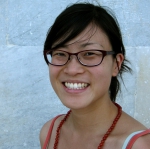A TransPacific Poetics (Litmus Press, 2017), edited by Lisa Samuels and Sawako Nakayasu, is an unprecedented collection of poetry, criticism and essays gathered from across Oceania and the Pacific. Transnational and cross-hemispheric, the anthology articulates a thoughtfully conceived poetics whose ethical and ecological stakes are explored by its co-editors. “So many literary collections continue to be organized according to sole-nation origin,” Samuels observes in the anthology’s introduction, stating, “this collection works to bolster a poetics of transitivity.” The book’s thinking modes draw from the rich cultural and linguistic mixings that shape the editors’ lives; Nakayasu has lived in China and now shuttles between the United States and Japan, and Samuels has lived in the United States, Europe, the Middle East, Malaysia, and is now based in Aotearoa/New Zealand. A TransPacific Poetics is not an anthology in the traditional sense, in which the work claims to represent a certain group or cultural identity. Instead, the editors conceptualize the collection as generative, gesturing toward as-yet unexplored identities. In this way, A TransPacific Poetics both represents and (knowingly) resists representing the vastness of thought taking place in and across the Pacific region, acknowledging its “inclusions and lacunae” as starting points for projects that explore further transculturalisms.
Much of the collection features writing that exists in relation to textual and non-textual artifacts, and to geographies and histories that have profoundly shaped the experience of transpacific life: colonialism, military conquest, legacies of white settlements and racism. Jai Arun Ravine’s essay, “Under Erasure,” addresses the experience of making the film “TOM/TRANS/THAI” while in residency at ComPeung Village of Creativity in Northern Thailand; in adapted blog post form, they reflect on the issues of race, gender and language that emerged as they navigated the complex terrain of Thailand’s tourist culture and their own mixed-race, transgender identity. In “The History of the Hay(na)ku,” poet Eileen Tabios describes the invention of the hay(na)ku or “Pinoy Haiku” as a community-based poetic form. The essay contains excerpts from her poetics blog, where the form was inaugurated, and numerous responses from the Filipino poetry community, including haiku by prominent poets like Barbara Jane Reyes and Patrick Rosal.
No two pieces in A TransPacific Poetics are alike, though all share a common concern for language that moves across this shared space. Many of the poems enact language processes through typological drift, whitespace and strikethrough, as in Craig Santos Perez’s "from unincorporated territory [guma’]," which performs text as currents and tidal waves. His poems include a “militarized ars poetica” and several refracted glossaries of military terms, which make their own argument for what constitutes a transpacific poetics. Ya-Wen Ho’s recursive poem sequence “from All the Identity Answers” cannibalizes itself and the space on which it’s printed, listing identities that range from “a person perceived as Asian; an Asian; a faux-Asian” to “a person who celebrates birthdays awkwardly; a person who often (and embarrassingly) mishears.” In similar fashion, Lehua M. Taitano’s “from A Bell Made of Stones” dramatizes the illegibility of transpacific experience through textual layering. Her lines weave elements of cultural history, family loss and information from the Guam Visitors Bureau into eerie palimpsests that, in places, are only faintly readable. In many ways, this radical collection of writing — memory cards, palimpsests, lists, ship’s logs — defies categorization and even, in some cases, legibility. Taken together, the works function as signs pointing to textual worlds beyond themselves.
For the U.S. reader, this encounter with poetry and other writing from Aotearoa/New Zealand and Australia destabilizes identity categories that, in the United States, are all too commonly drawn by national or ethnic origin. Reading essays so firmly grounded in other hemispheres, like Murray Edmond’s “Tattooed Rocks at Whāingaroa: A Personal Archaeology of Knowledge through Poetry,” which reckons with the politics of knowledge and naming in a former white settlement like New Zealand, and Stuart Cooke’s “Non-Local Localities: Trans-Pacific Connections between Aboriginal and Mapuche Poetry,” a comparative study of indigenous poetries from Australia and Chile, we realize how seldom we hear voices from across the water and how isolated we are in our American context. This vital intervention challenges our U.S.-centric thinking and reading modes, enlarging our imagination of who “we” is. As the editors acknowledge, however, the collection is not without its tensions, specifically because it includes only writing in English. The works that address Asian contexts (Thailand, the Philippines, Korea), for instance, are primarily by U.S.-based poets, making visible the dilemma of accessibility and language barriers inherent in any network of cross-hemispheric writing. A truly transpacific poetics must be “latent, open, multilingual in intention, directly in contact with everything possible,” Cooke argues; yet, how to achieve such an incredible project?
Nakayasu’s afterword, a sequence of fragments excerpted from various sections of the book, enacts its own kind of transpacific poetics. The essay is a swirl of found language in liquid suspension, a substrate of voices that, together, form a new substance. With this, Nakayasu invites us to understand A Transpacific Poetics as water and the reader as one who dips her arms into it, as one would dip one’s arms into the sea. It’s an ambitious undertaking, but the challenge, of course, is that when looking at “new formations of water and land and sky and all the language that lies in between,” it is impossible to take everything in, even in an anthology as expansive as this one. Though it may be true that “anthology can be porousness,” just as one can never see the entire ocean, we may never be able to understand transpacific poetics in its entirety; to encounter it is to recognize our inability to ever apprehend it fully.










Comments